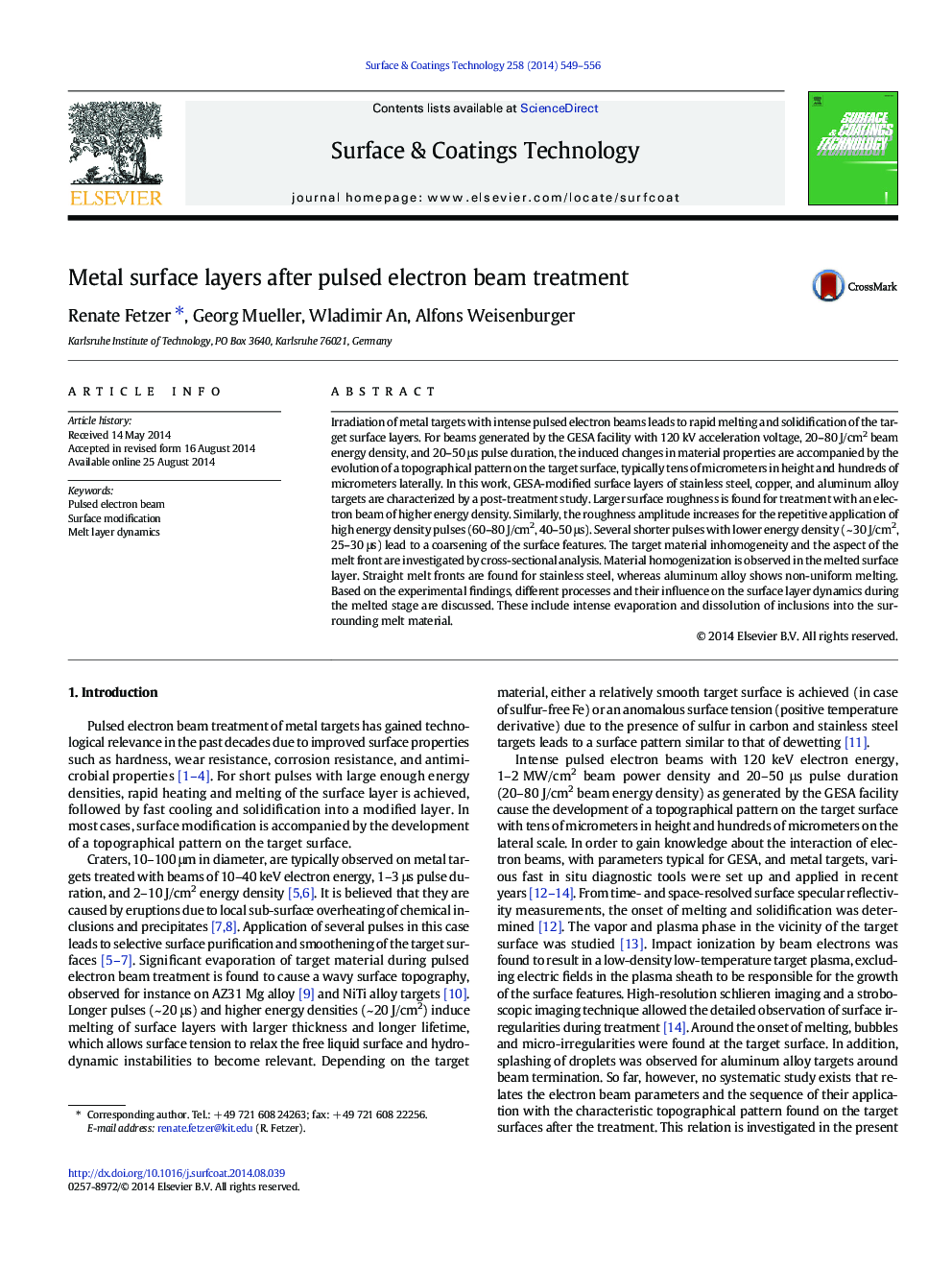| Article ID | Journal | Published Year | Pages | File Type |
|---|---|---|---|---|
| 8027343 | Surface and Coatings Technology | 2014 | 8 Pages |
Abstract
Irradiation of metal targets with intense pulsed electron beams leads to rapid melting and solidification of the target surface layers. For beams generated by the GESA facility with 120 kV acceleration voltage, 20-80 J/cm2 beam energy density, and 20-50 μs pulse duration, the induced changes in material properties are accompanied by the evolution of a topographical pattern on the target surface, typically tens of micrometers in height and hundreds of micrometers laterally. In this work, GESA-modified surface layers of stainless steel, copper, and aluminum alloy targets are characterized by a post-treatment study. Larger surface roughness is found for treatment with an electron beam of higher energy density. Similarly, the roughness amplitude increases for the repetitive application of high energy density pulses (60-80 J/cm2, 40-50 μs). Several shorter pulses with lower energy density (~ 30 J/cm2, 25-30 μs) lead to a coarsening of the surface features. The target material inhomogeneity and the aspect of the melt front are investigated by cross-sectional analysis. Material homogenization is observed in the melted surface layer. Straight melt fronts are found for stainless steel, whereas aluminum alloy shows non-uniform melting. Based on the experimental findings, different processes and their influence on the surface layer dynamics during the melted stage are discussed. These include intense evaporation and dissolution of inclusions into the surrounding melt material.
Related Topics
Physical Sciences and Engineering
Materials Science
Nanotechnology
Authors
Renate Fetzer, Georg Mueller, Wladimir An, Alfons Weisenburger,
